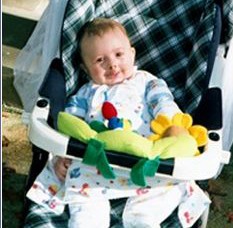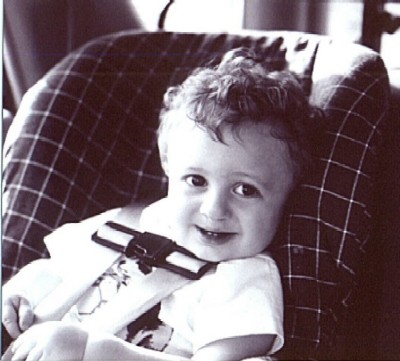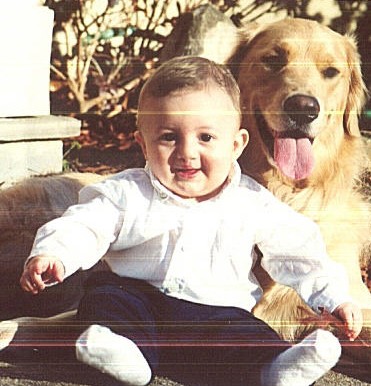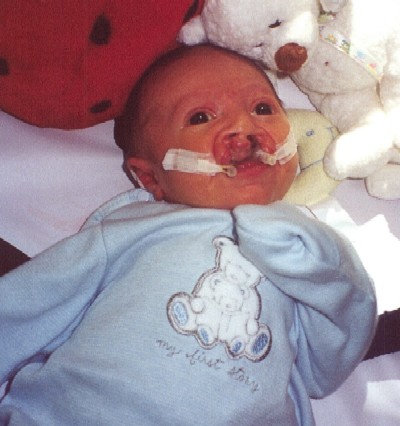
Two weeks old, wearing nasoalveolar molding plate
Unfortunately, my doctor was not very familiar with cleft lip and palate; unfortunately, he could only offer information and reassurances through medical textbooks that he retrieved from his office; and, another misfortune was that the news apparently shook him so that he lost his terrific bedside manner and presented the amnioscenthesis to me without discussion. By the way, I was having a boy.
While surfing the Web, I ran
across a cleft chat group where someone asked, “Who is the best
plastic surgeon?” Someone responded, Dr. Court Cutting at The Institute
of Reconstructive Plastic Surgery at New York University (NYU) Medical
Center. Coincidentally, my husband and I were going to New York for a
family event. During this weekend trip, I scheduled a consultation with
Dr. Cutting.
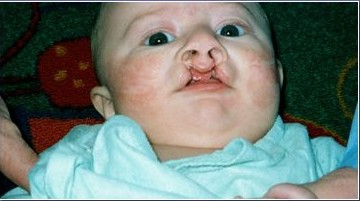
Day of 1st surgery. Gap in alveolar ridge and upper lip closed with nasoalveolar molding
Dr. Cutting explained his unique method of nasoalveolar molding to repair Adam’s cleft. This technique requires the baby to wear a molding plate, fashioned for his mouth within weeks after birth. Over the course of 3-5 months, the molding plate slowly closes the gap in the alveolar gum ridge and upper lip and extends the columella, the center part of the nose dividing the two nostrils.
On Monday, May 7, 2001, we welcomed Adam Fortis into the world! Born full-term, he was big, healthy and beautiful! After an hour of pure joy holding my son, we were greeted by the neonatologist, who after an obligatory hello, told us that he recommended that Adam be transferred to a nearby hospital with more specialized services. The hospital nurses and doctors were not familiar or comfortable with feeding a baby born with a cleft; however, after four months of research and practice with various bottles, I knew that I could feed Adam. He was a hungry baby and the Haberman bottle worked wonderfully. Adam stayed in our room and the three of us went home together as a family.
Adam had his first surgery at five months of age. He was in the hospital one night. The most difficult part was that the molding plate that he wore continually and sucked on like a pacifier, was suddenly gone. We also took away his bottle and had to feed him with a syringe (Breck) feeder for the first three weeks post-op. Making the transition from the bottle to the syringe was not easy. At one year, Adam had a second surgery to close the palate. Again, he would not be allowed a bottle. So, one week before surgery, I completely stopped using the bottle and only fed him with a cup. Once again, he surprised me by how fast he recovered from surgery; however, this time transitioning to the cup was not a problem. He was hospitalized one day and the next day we went strolling in Central Park!
Adam is just over two years old now and is happy, fun, energetic, inquisitive and extremely talkative. He’s enjoying camp this summer and starting preschool in the fall. Our days are filled with the normal toddler activities: reading, playdates, and going to the park, pool, and zoo. Initially, learning that our child would have a cleft lip and palate was devastating to us. In part, it was due to the ignorance of the doctors we first encountered. My hope is that Virginia Smiles can prevent other parents from having to go through similar experiences and that through meeting other parents, expectant or new parents of a baby with a cleft lip/palate better understand the realities rather than just the statistics and myths and are able to care for their child easier.
